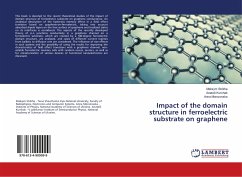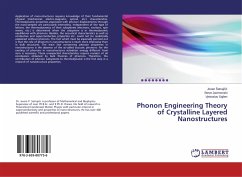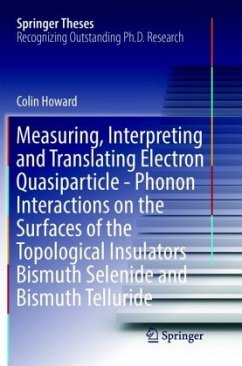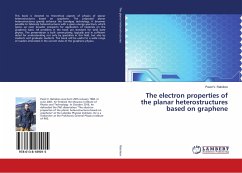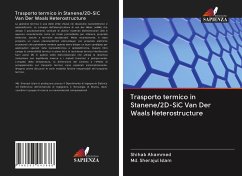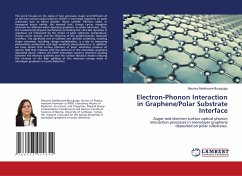
Electron-Phonon Interaction in Graphene/Polar Substrate Interface
Auger and electron-surface optical phonon interaction processes in monolayer graphene deposited on polar substrates.
Versandkostenfrei!
Versandfertig in 6-10 Tagen
36,99 €
inkl. MwSt.

PAYBACK Punkte
18 °P sammeln!
This work focuses on the study of two processes; Auger and Diffusion of an electron-surface optical phonon (ESOP) in monolayer graphene on polar substrates such as silicon dioxide, silicon carbide, hafnium oxide, or hexagonal boron nitride. We showed that; charge carrier relaxation channels are affected when deposing graphene on polar substrates. Thus, the fundamental physical mechanisms controlling the ultra-fast dynamics in graphene are influenced by the choice of polar substrate, temperature, charge carrier density, and the thickness of the graphene/polar substrate interface. The significan...
This work focuses on the study of two processes; Auger and Diffusion of an electron-surface optical phonon (ESOP) in monolayer graphene on polar substrates such as silicon dioxide, silicon carbide, hafnium oxide, or hexagonal boron nitride. We showed that; charge carrier relaxation channels are affected when deposing graphene on polar substrates. Thus, the fundamental physical mechanisms controlling the ultra-fast dynamics in graphene are influenced by the choice of polar substrate, temperature, charge carrier density, and the thickness of the graphene/polar substrate interface. The significant role of collinear and ultrafast scattering, enabling Auger processes, including charge multiplication, is a key to improving photovoltaic production and high sensitivity photo-detectors. In addition, we have shown that surface phonons of polar substrates produce an electric field that interacts with the electrons of the monolayer graphene deposited above. Indeed, the ESOP interaction causes a resonant coupling between the electron sublevels and the surface vibration modes inducing the increase of the Rabi splitting of the electrons energy levels in monolayer graphene on polar dielectrics.



